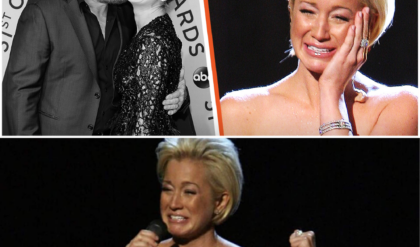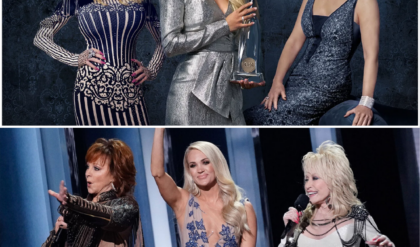On January 14, 2024, HBO introduced the fourth season of its acclaimed anthology series, True Detective: Night Country, marking a bold departure from its predecessors. Set in the frigid, perpetually dark expanse of Ennis, Alaska, this season follows Detectives Liz Danvers (Jodie Foster) and Evangeline Navarro (Kali Reis) as they unravel the mysterious disappearance of eight researchers from the Tsalal Arctic Research Station. While the season has garnered widespread praise, becoming the most-watched installment of the series and earning critical acclaim, one subtle yet profound difference sets it apart from the earlier seasons—a distinction so elusive that few have pinpointed it. As of June 24, 2025, with the series’ legacy still resonating, this unique element offers a fresh lens through which to view the evolution of True Detective.
A New Chapter in a Storied Franchise
Since its debut in 2014, True Detective has captivated audiences with its anthology format, delivering self-contained narratives featuring new casts and settings each season. The first season, helmed by creator Nic Pizzolatto and directed by Cary Fukunaga, introduced Detectives Rust Cohle (Matthew McConaughey) and Marty Hart (Woody Harrelson) in the sweltering Louisiana bayou, tackling a ritualistic murder tied to a shadowy cult. Its philosophical depth, atmospheric tension, and iconic monologues about time as a “flat circle” set a high bar. Season 2 shifted to a gritty California underworld with a quartet of flawed cops, while Season 3 returned to a slower, more introspective pace in the Ozarks with Mahershala Ali’s Detective Wayne Hays. Each season retained a core formula: complex investigations, haunted detectives, and hints of the supernatural, all framed by male-dominated narratives.
Night Country broke this mold under the guidance of showrunner Issa López, marking the first season without Pizzolatto as the primary writer. López, who wrote and directed all six episodes, reimagined the series as a “dark mirror” to Season 1, swapping the sweaty male-centric focus for a cold, female-led story. The shift was immediately noticeable: Jodie Foster and Kali Reis brought a dynamic interplay to the screen, their characters grappling with personal demons amid an Arctic mystery. The season’s success—boasting a 92% approval rating on Rotten Tomatoes and 19 Emmy nominations—suggests López tapped into something unique, yet the most striking difference lies beneath the surface, often overlooked by even the most ardent fans.
The Elusive Difference: A Shift in Narrative Agency
The key distinction in Night Country is its redefinition of narrative agency. Unlike previous seasons, where the story unfolded primarily through the perspectives of male detectives driving the investigation, this season decentralizes the traditional detective gaze. In Seasons 1, 2, and 3, the male leads—whether Cohle, Hart, or Hays—served as the moral and investigative anchors, their internal struggles and deductive prowess shaping the narrative. The cases, while complex, were ultimately solved through their actions, with female characters often relegated to supporting roles as victims, love interests, or catalysts for the detectives’ growth.
Night Country subverts this dynamic by distributing agency across a broader ensemble, with the investigation emerging as a collective effort shaped by the community of Ennis. The disappearance of the Tsalal researchers is not just a puzzle for Danvers and Navarro to solve; it’s a mystery intertwined with the town’s Indigenous Iñupiaq population, local activists, and even the land itself. Characters like Rose Aguineau (Fiona Shaw), who encounters the ghost of Travis Cohle, and the cleaning staff at Tsalal, who uncover critical clues, play pivotal roles. This communal narrative contrasts sharply with the solitary, often macho heroism of past seasons, where the detective duo bore the burden alone.
This shift is subtle but transformative. Where Cohle and Hart’s investigation in Season 1 hinged on their personal redemption arcs, Danvers and Navarro’s journey is catalyzed by external voices—ghostly whispers, Indigenous lore, and the town’s collective trauma. The spiral symbol, a callback to Season 1’s Yellow King cult, reappears not as a detective-led discovery but as a motif embedded in the environment, revealed through the actions of secondary characters. This decentralization challenges the traditional True Detective formula, making the solution less about individual brilliance and more about the interplay of perspectives—a nuance that few have fully recognized.
Contextualizing the Change
López’s inspiration for this approach draws from diverse sources, including John Carpenter’s The Thing, the Dyatlov Pass incident, and Billie Eilish’s “Bury a Friend.” These influences emphasize isolation and collective survival, mirroring the season’s setting during polar night, when the sun vanishes for weeks. The perpetual darkness amplifies the community’s role, as survival depends on shared knowledge rather than solitary deduction. This aligns with López’s intent to create a “feminist revision” of the series, as noted by critics like Inkoo Kang of The New Yorker, who praised its departure from the “macho poetry” of earlier seasons.
The change also reflects a broader cultural shift. Released in 2024, Night Country arrives in an era where collaborative storytelling and diverse voices are increasingly valued, contrasting with the 2014 landscape that celebrated Season 1’s lone-wolf brilliance. The season’s focus on Indigenous issues, such as the environmental impact of the Silver Sky mine, further embeds the narrative in a communal struggle, a departure from the individualistic quests of past detectives. Yet, this evolution has sparked debate, with some fans and critics, like Mike Hale of The New York Times, critiquing the season’s “incoherence” due to its sprawling cast, missing the intentional shift in agency.
The Impact on Storytelling and Reception
This reimagined agency reshapes the season’s tone and pacing. Where Season 1 built to a climactic confrontation with Errol Childress, Night Country’s resolution—revealing the researchers’ deaths as a vigilante act tied to Annie K’s murder—emerges organically from the community’s actions rather than a detective-led breakthrough. The “corpsicle” discovery, a frozen mass of the researchers’ bodies, becomes a communal spectacle rather than a singular clue, reflecting the town’s shared history of loss. This approach, while praised for its atmospheric depth by Lucy Mangan of The Guardian, has drawn criticism for its slow pacing, as Brian Lowry of CNN noted, with some viewers expecting the tight, plot-driven momentum of earlier seasons.
The ensemble focus also enhances the performances. Foster’s Danvers and Reis’s Navarro shine, but their strength lies in reacting to the town’s narrative rather than dominating it. Supporting actors like John Hawkes as Hank Prior and Isabella Star LaBlanc as Navarro’s niece add layers, their contributions driving the plot in ways unseen in previous seasons. This collective agency fosters a richer exploration of themes—colonialism, environmental justice, and the supernatural—making Night Country a philosophical drama as much as a thriller, as Ross McIndoe of Slant Magazine observed.
Challenges and Missed Opportunities
The shift isn’t without flaws. The broader cast can dilute focus, leaving some characters underdeveloped, a point raised by Dylan Roth of Observer.com. The supernatural elements—ghosts and visions—feel more integral than in past seasons, yet their resolution leans on community lore rather than detective logic, which may alienate fans accustomed to Cohle’s existential musings. Additionally, the six-episode format, shorter than the eight-episode runs of prior seasons, limits the time to flesh out this collective narrative, leading to a rushed finale that some, like Forbes’ reviewer, found unsatisfying.
Yet, this difference is precisely what makes Night Country stand out. It challenges the viewer to look beyond the detective duo, engaging with a story where the solution isn’t a trophy for the leads but a reflection of a community’s resilience. The lack of recognition for this shift may stem from entrenched expectations—fans seeking another Cohle-like figure might overlook the season’s quieter innovation.
Looking to the Future
As True Detective gears up for a fifth season with López returning, this redefinition of agency could shape its future. The success of Night Country—evidenced by its Emmy wins, including Foster’s Outstanding Lead Actress award—suggests audiences are ready for this evolution. The season’s ties to Season 1, like the Cohle family connection, hint at a universe where past and present narratives converge through communal lenses rather than solitary heroes.
On June 24, 2025, with Night Country’s legacy still unfolding, its subtle departure offers a blueprint for anthology series seeking to balance tradition with reinvention. Few may have noticed this shift in narrative agency, but it’s the heartbeat of what makes this season a landmark in the True Detective saga—a story not just told by detectives, but by the darkness they inhabit.





